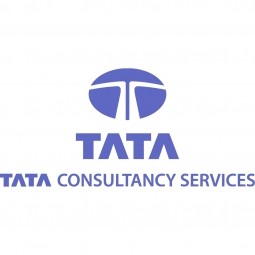
Technology Category
- Application Infrastructure & Middleware - API Integration & Management
- Platform as a Service (PaaS) - Application Development Platforms
Applicable Functions
- Maintenance
- Procurement
Use Cases
- Inventory Management
- Speech Recognition
Services
- System Integration
The Customer
Vodafone Hungary
About The Customer
Vodafone Hungary is a leading telecommunications company that provides a range of services including fixed voice services, cable and gigabit passive optical networks (GPON) network based broadband services. The company has nearly one million subscribers and is constantly seeking to improve its services and customer experience. After acquiring UPC Hungary, Vodafone Hungary faced the challenge of managing a complex IT and operational support system (OSS) landscape. The company needed a solution that could streamline its operations, improve order management, and enhance the customer experience.
The Challenge
Vodafone Hungary, after acquiring UPC Hungary, was faced with the challenge of transforming, rationalizing, and consolidating its complex IT and operational support system (OSS) landscape. The company needed a middleware solution that could manage its nearly one million subscribers and cater to fixed voice services as well as cable and gigabit passive optical networks (GPON) network based broadband services. Other transformation goals included bulk order management, legacy service migration, maintenance of service and resource inventory, and fixed IP address management. The challenge was to simplify the order orchestration process and streamline the operations.
The Solution
To address the complex IT and OSS landscape, Vodafone Hungary chose the TCS HOBS order management platform. This platform is based on a plug-and-play service-oriented architecture (SOA) with out-of-the-box (OOTB) interface specifications for third-party integrations. Several open APIs and microservices enabled TCS to quickly integrate HOBS with existing Vodafone systems. TCS HOBS also enabled the configuration of business rules and workflows, automated processes, and incorporated manual interventions. The availability of tasks, SLAs, and notifications helped Vodafone Hungary to quickly implement various orchestration scenarios for multiple services such as fixed voice services, GPON broadband, and cable network broadband. The mapping of commercial products to the HOBS service catalog which supports routing to the respective logical network platforms also helped Vodafone Hungary ensure seamless service activation.
Operational Impact
Quantitative Benefit

Case Study missing?
Start adding your own!
Register with your work email and create a new case study profile for your business.
Related Case Studies.

Case Study
Hospital Inventory Management
The hospital supply chain team is responsible for ensuring that the right medical supplies are readily available to clinicians when and where needed, and to do so in the most efficient manner possible. However, many of the systems and processes in use at the cancer center for supply chain management were not best suited to support these goals. Barcoding technology, a commonly used method for inventory management of medical supplies, is labor intensive, time consuming, does not provide real-time visibility into inventory levels and can be prone to error. Consequently, the lack of accurate and real-time visibility into inventory levels across multiple supply rooms in multiple hospital facilities creates additional inefficiency in the system causing over-ordering, hoarding, and wasted supplies. Other sources of waste and cost were also identified as candidates for improvement. Existing systems and processes did not provide adequate security for high-cost inventory within the hospital, which was another driver of cost. A lack of visibility into expiration dates for supplies resulted in supplies being wasted due to past expiry dates. Storage of supplies was also a key consideration given the location of the cancer center’s facilities in a dense urban setting, where space is always at a premium. In order to address the challenges outlined above, the hospital sought a solution that would provide real-time inventory information with high levels of accuracy, reduce the level of manual effort required and enable data driven decision making to ensure that the right supplies were readily available to clinicians in the right location at the right time.

Case Study
Hardware Retailer Uses Data Warehouse to Track Inventory
Ace tracked which products retailers ordered, when they were ordered and shipped. However, the company could not track or forecast actual sales. Data used for reporting was up to a one-week old, owing to performance and data cleansing issues. Requirement to integrate wholesale and inventory data with POS data to help drive key business decisions, improve category management, lower inventory costs and optimize pricing. Reliance on custom coding to integrate POS data was excessively resource intensive and led to major performance constraints.

Case Study
Expertech - Capital Tool Inventory
Costly tools used to splice fiber optic cables are an important part of Expertech’s operational and capitalized expenses, but the company did not have an automated system in place to track their tools and optimize their usage. The existing data in its tracking system was inaccurate and required manual updating, making it essential for the company to implement an efficient process to track and follow up on its capital tool inventory.

Case Study
Remake Enterprise-to-production System
The client was running a legacy material flow tracking system and wanted to replace the system with a more effective one as the system was increasingly expensive to maintain and support and also was not extendable. The client's IT landscape was filled with modern applications and it was difficult to interface the material flow tracking system with modern applications.





